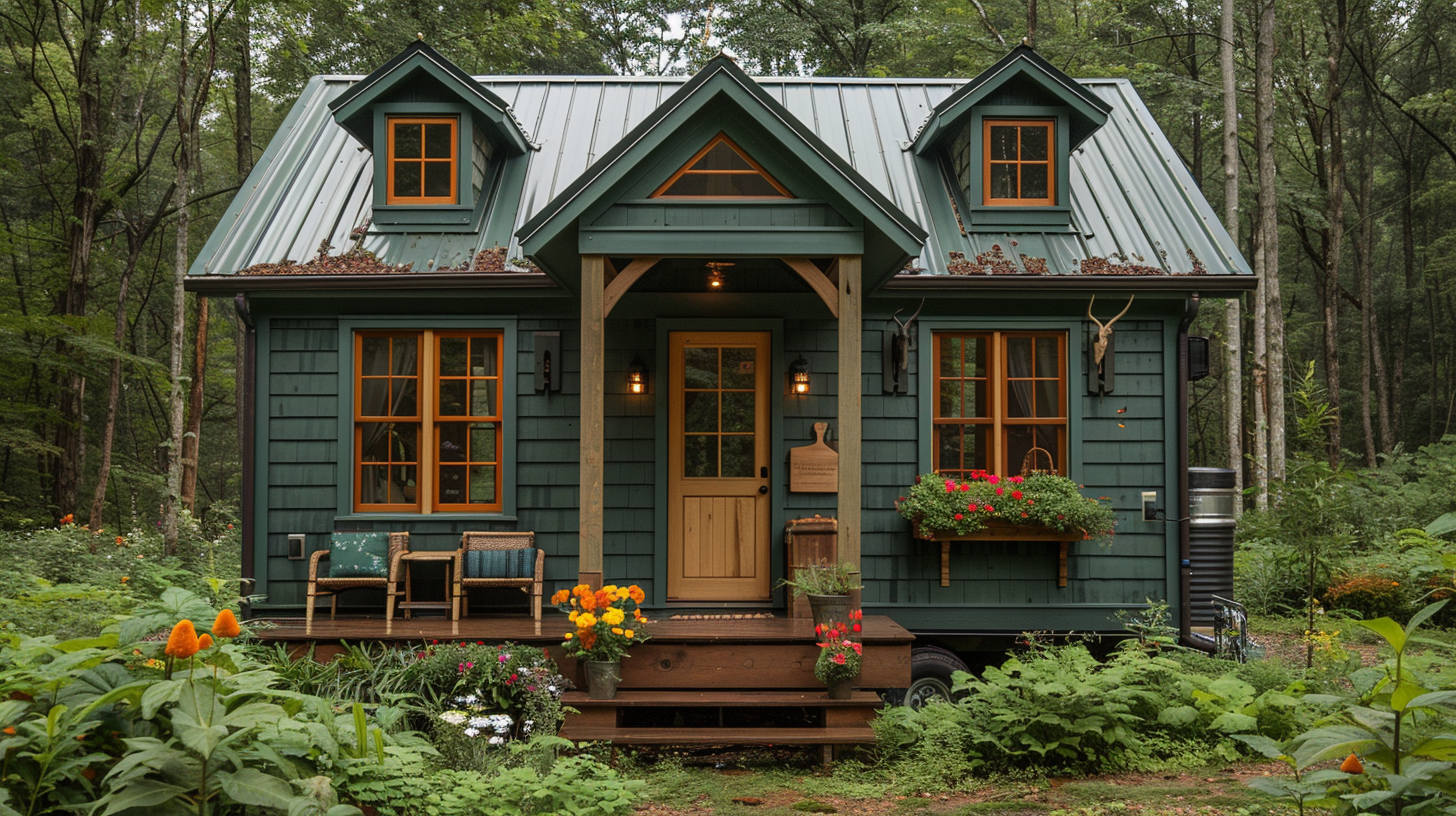Key points
• Size and Type: Septic systems for tiny houses are made smaller to match their lower waste output. Options include not only the usual smaller septic setups but also more innovative choices like composting or incinerator toilets.
• Local Regulations: It’s really important to follow the rules set by local authorities when putting in a septic system for a tiny home. These rules can change depending on where you are, so make sure to get the right permits and have your system checked to keep things above board and safe for the environment.
• Maintenance and Cost: Keeping a tiny house septic system in tip-top shape means having it checked regularly and pumped as needed to avoid any nasty surprises or damages. The upfront cost might be cheaper than bigger septic systems since it’s small, but don’t forget to think about the cash you’ll need down the line for upkeep and possible extra expenses.
Contents
- 1 Key points
- 2 Understanding Septic Systems for Tiny Homes
- 3 Tiny House Septic Systems
- 4 Getting Ready to Dig for Small Septic Systems
- 5 Easy Installation Instructions
- 6 Connecting Tiny Home Plumbing to a Septic Tank
- 7 Everyday Tips for Living in a Small Home with a Septic Tank
- 8 Understanding Septic Systems in Tiny Homes
- 9 Tales of Success from Tiny House Dwellers
- 10 Key Takeaways and Handy Tips
- 11 Understanding Tiny House Septic System Terms
- 12 Rules and Requirements for Septic Systems in Small Homes
Understanding Septic Systems for Tiny Homes
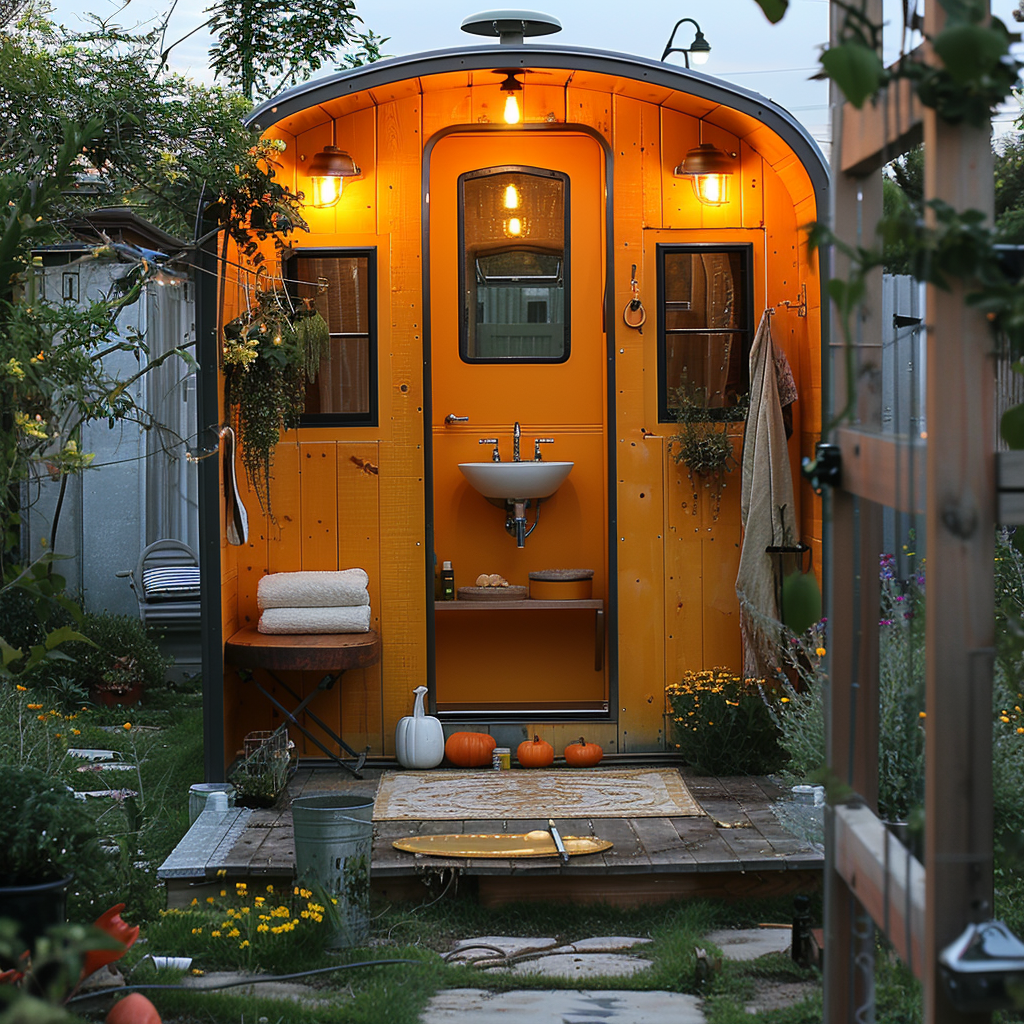
Septic systems for tiny homes are just smaller versions of the usual ones. Think of them as miniature sewage treatment plants. They’re vital when you can’t connect to public sewage, which is pretty standard for tiny houses, especially in the sticks. These systems let people live independently of city services and also fit in well with the eco-friendly mindset that’s big in the tiny house community.
Tiny House Septic Systems
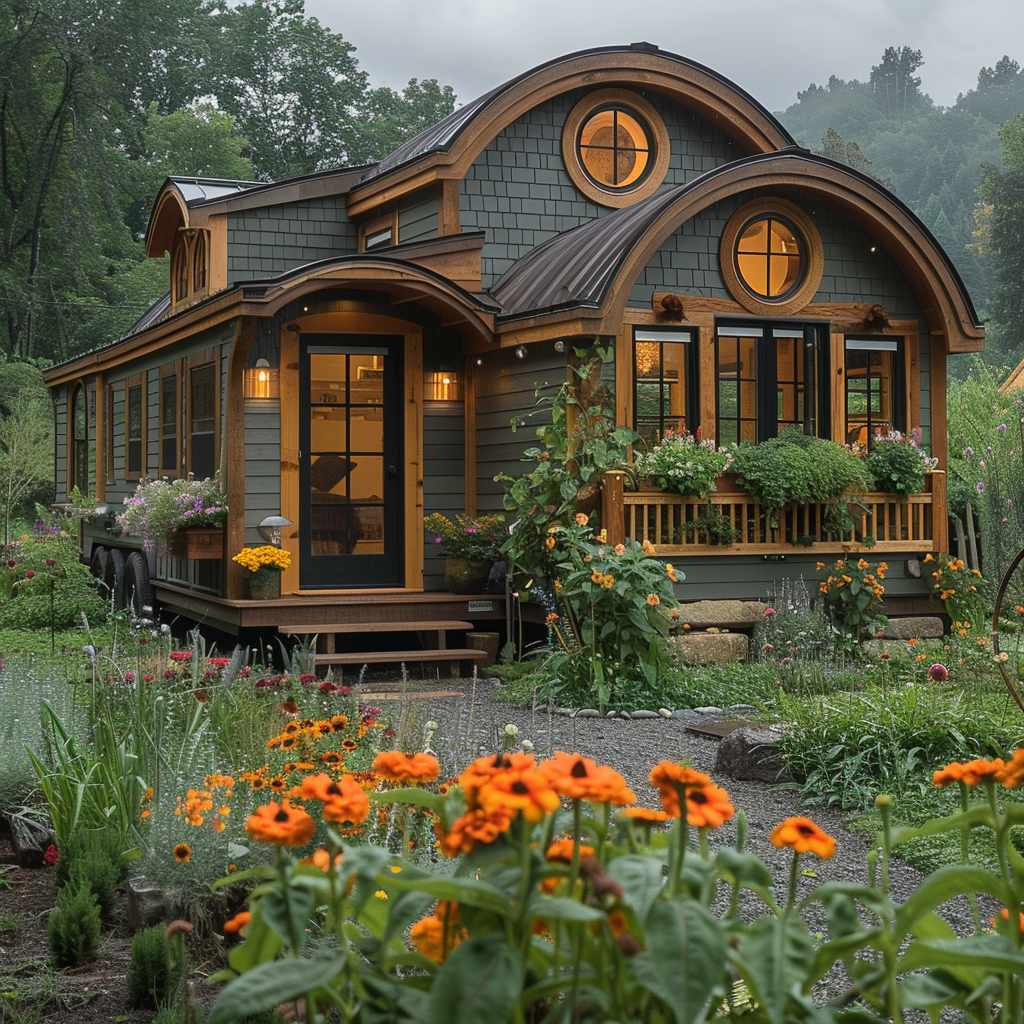
Tiny houses use small and efficient septic systems to handle waste. They include:
- Septic Tank: Here, the heavy waste settles to the bottom and separates from the water. These tanks are smaller than the ones in regular houses.
- Drainfield: This is where the liquid spills out and gets cleaned as it moves through the ground. It’s often called a leach field.
- Piping: Pipes link your tiny house to the septic tank and then carry liquids out to the drainfield.
- Ventilation: Vent pipes stop gas from building up and help break down the waste.
This setup lets people living in tiny homes have a reliable way to deal with waste even though they’ve got less room.
When planning a septic system for a tiny house, you need to think about how little space you have and how much waste you’ll produce. It’s important that every part of the system fits right and still works well.
Figuring Out Space and How Big Your System Needs to Be
To pick the right size for a septic system in a small home, check out the space you have and guess how much wastewater you’ll make. This will be based on how many people live there and how much water they use each day. This helps make sure your system won’t get overloaded.
Choosing the Right Septic System for Small Homes
Picking the best septic system for a tiny house is really important. There are many choices, from standard systems to ones like composting toilets. The decision should take soil type, how close you are to water, and how easy it is to keep up. A good choice will fit your tiny home’s limited space perfectly.
Laws You Need to Follow for Your Tiny House Septic System
It’s crucial to follow the laws when putting in a septic system in a tiny home. These laws change from one place to another and cover things like where you can build, safety rules, and looking after nature. To follow the law, you might need to get permission, have someone check out your property, and get your system inspected.
Getting Ready to Dig for Small Septic Systems
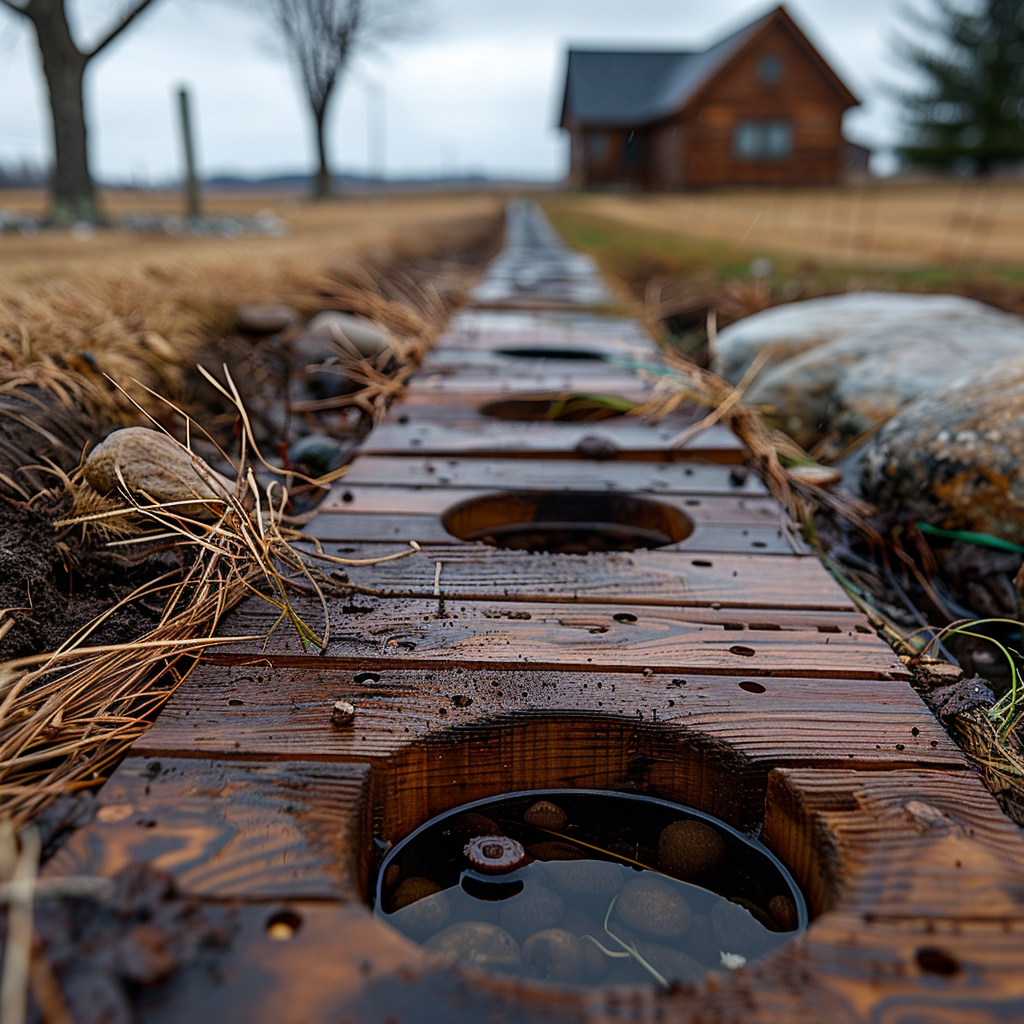
When you’re getting set to put in a septic system for a tiny house, you’ve got to get the site ready first. You need a good plan so that everything fits in the small area and follows the rules your town has. For digging part, you don’t want to take out too much dirt, just enough so your smaller tank and drainage area have space.
Easy Installation Instructions
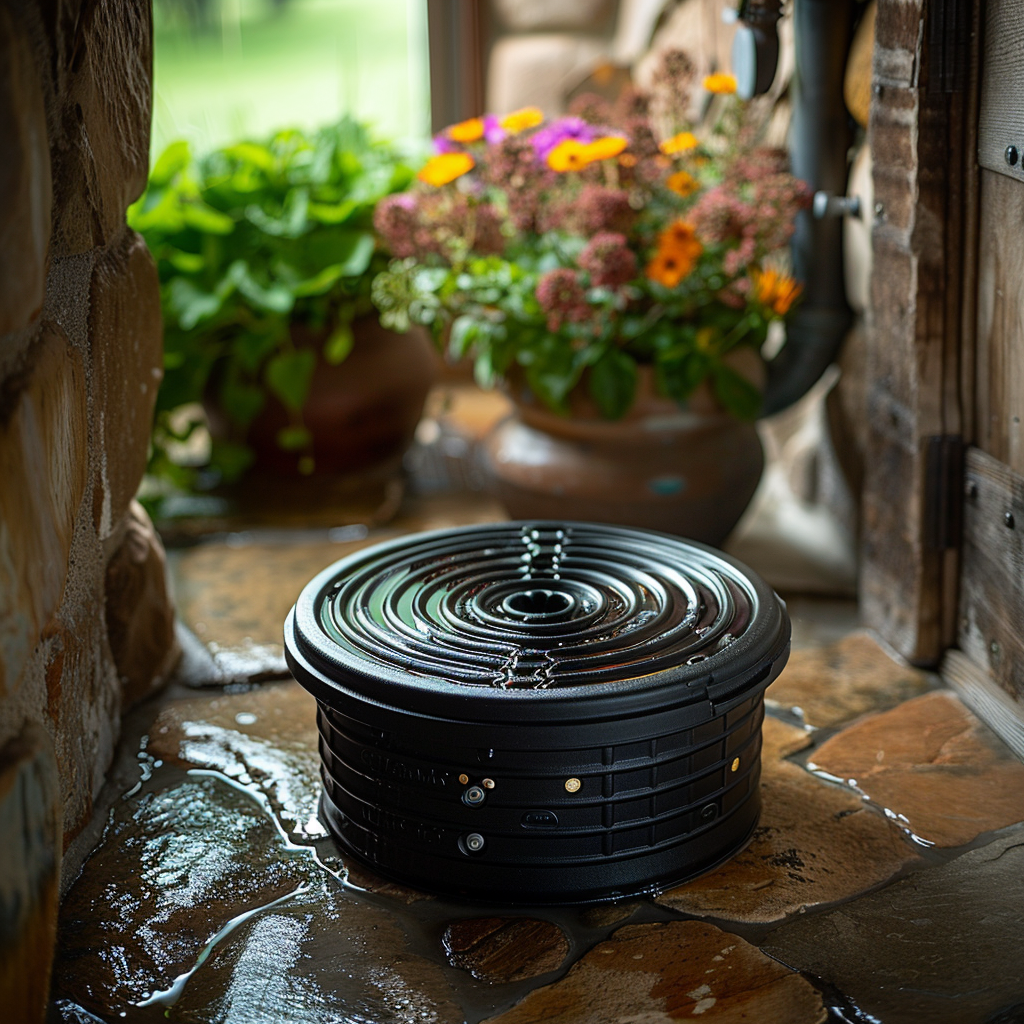
Installing a septic system for a tiny house requires following simple, clear steps. Start by putting the tank into the dug-out spot. Next, you need to hook up the inlet pipe that links your house’s plumbing to the tank. After that, attach the outlet pipes that go from the tank to the distribution box and then to the leach field. To finish off, cover everything with dirt and plant some grass or plants on top for better filtering.
Connecting Tiny Home Plumbing to a Septic Tank
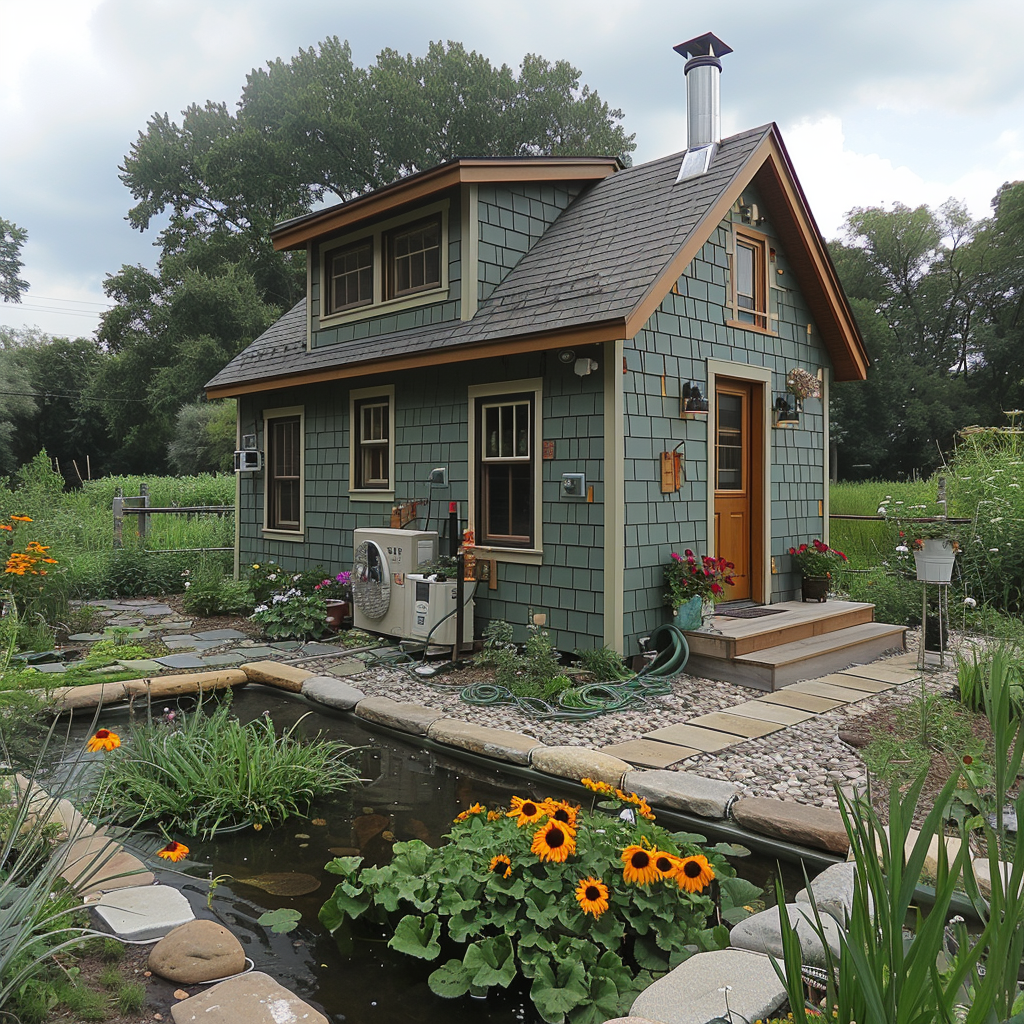
Setting up plumbing for a tiny house with a septic system needs accurate work. You start by linking the home’s waste lines to the septic tank. The pipes must line up right so there won’t be any leaks or backward flow. Once you’re sure every connection is secure and watertight, you can bury the system. But, keep the inspection pipes and tank covers reachable.
The septic setup for a tiny house works like the larger ones but fits the smaller size of the home. It has two key parts: the tank and the drain field. Used water goes from the house to the tank, where solid stuff sinks and oils float up, letting cleaner water flow to the drain field. Here, the water filters through soil, cleaning it before it goes back into the natural water reserves.
Everyday Tips for Living in a Small Home with a Septic Tank
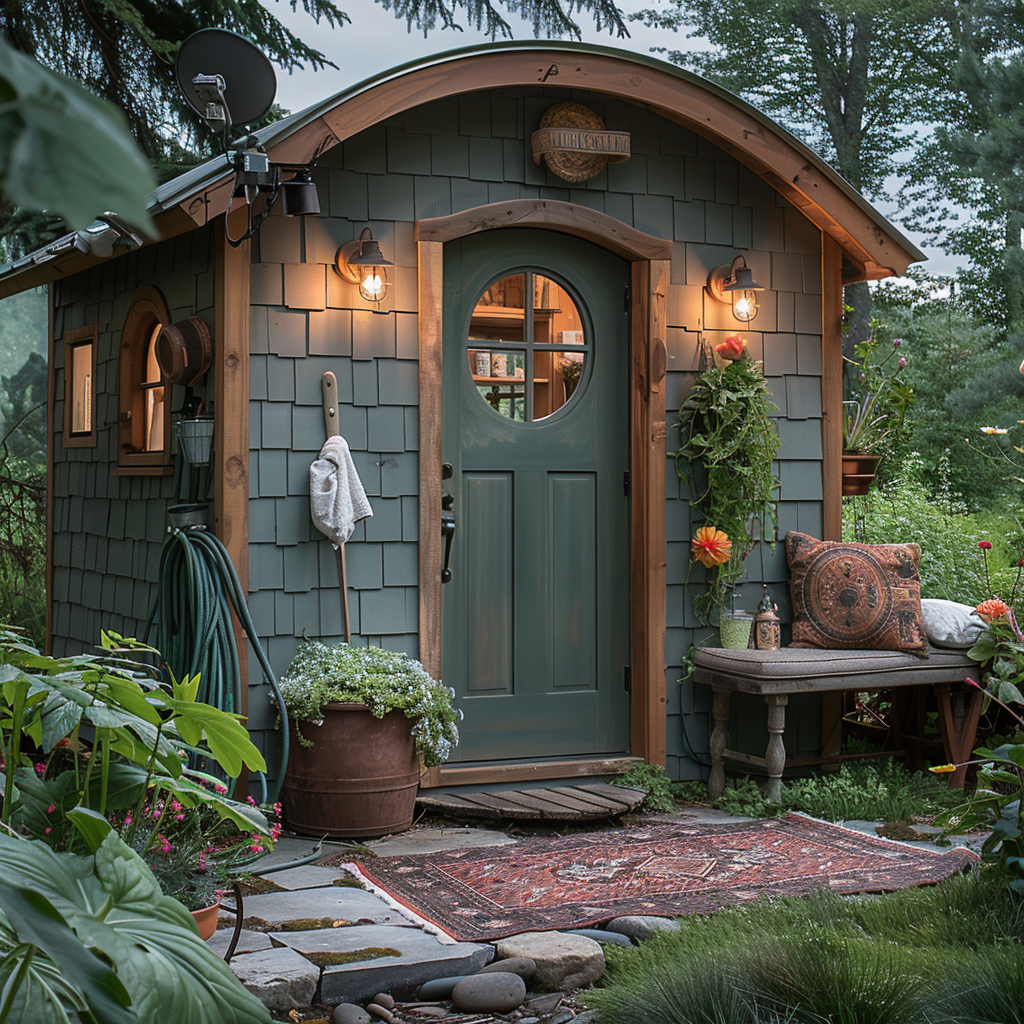
When you live in a small house that has a septic tank, you need to be careful about how much water you use and what you throw away. To keep from putting too much into the system, fix drips right away and use fixtures that don’t waste water. Watch out for what ends up in your sink or toilet. Stuff that won’t break down or strong cleaners can ruin your septic tank and make it work poorly. Stick to a plan for looking after it, which means getting rid of the sludge in the tank now and then, based on how much you use it and its size.
Keeping Your System Running Smoothly
To take care of your septic system, you’ve got to plan ahead. Stay away from pouring lots of cleaning products down the drain. Also, choose toilet paper that’s okay for septic tanks and try to do laundry over several days instead of all at once.
Check-Ups by Experts
Getting your septic system checked every year by an expert is important. They can spot problems early, which can save you money on big repairs later and keep the environment safe.
Understanding Septic Systems in Tiny Homes
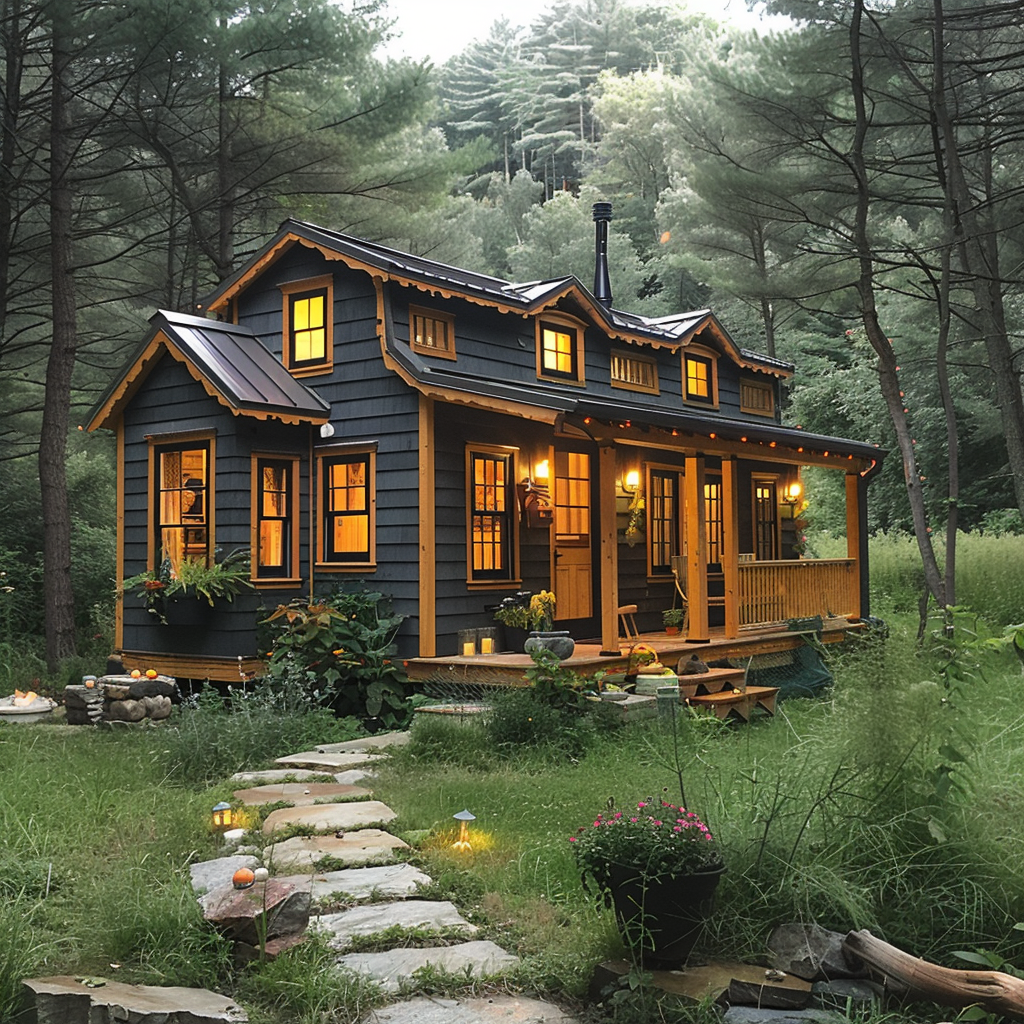
Tiny home septic systems are designed to be efficient due to the limited space. Like larger setups, they process wastewater by separating solid waste to form sludge at the bottom and scum on the top. The clean water in between layers moves through pipes to a distribution box which spreads it over the drainfield. Soil bacteria then clean this water before it goes back into the groundwater.
Knowing how these small septic systems work, how to manage them, and how they process waste can make them last longer and keep the environment safe. Understanding these main ideas is crucial for reliable tiny home waste management.
It’s important to keep your tiny home’s septic system in good shape to prevent expensive repairs or pollution. A regular maintenance plan and watching for any signs of problems can help your system run without issues. Let’s look into more details about this.
Maintenance Tips for Small Septic Systems
It’s vital to have a maintenance routine for your compact septic system. Pay attention to the following:
- Inspection and Pumping: Get your septic tank checked and pumped by a pro every three years or more often if you use it a lot or it’s small.
- Clean the Filter: Clean your septic tank filter each year to stop blockages that can cause backups or failures.
- Protect the Drainfield: Watch the drainfield — don’t park or drive on it. Grow only grass there to avoid roots damaging it.
- Save Water: Use less water by fixing any leaks quickly and installing fixtures that don’t use much water.
- Watch What You Flush: Don’t throw hard-to-break-down or toxic stuff down the drain. They can mess up the bacteria that treat the wastewater.
If you stick to these maintenance steps, your small septic system should last a long time.
Dealing With Issues in Tiny Home Septic Systems
Be on the lookout for signs of septic system issues so you can tackle them early. Here are common red flags:
- Bad Smells: If your house starts smelling bad, it might be because your septic tank is full or the vents are blocked.
- Slow Drains: If water drains slowly, it could mean you need to empty your tank, clear a blockage in a pipe, or fix your drainfield.
- Wet Yard: If your lawn is wet near the drainfield, your septic system might be overflowing or leaking and needs quick fixing.
- Nitrate Levels: High nitrate levels in well water tests could show that your septic system is leaking nutrients into your groundwater.
If you see these warnings, call a tiny home septic expert instead of trying to fix it yourself to avoid making things worse.
A good grasp of maintenance and fast action for problems are crucial in keeping a tiny home’s septic system healthy. By following these tips, owners can ensure their system works well and lasts long.
Tiny homes have to use space and resources wisely, including how they handle waste. Traditional septic systems aren’t always a great choice because of space, expense, or being eco-friendly. Luckily, there are other options that suit tiny home living better.
Eco-Friendly Waste Solutions for Tiny Homes
If you’re thinking of moving away from old-fashioned systems, consider cutting-edge alternatives fit for small places. Composting toilets don’t need water or complicated plumbing and turn waste into garden compost. Greywater systems reuse sink and shower water for watering plants, saving lots of water. Another choice is aerobic treatment units which use oxygen to break down waste faster than the typical methods without oxygen.
Cost and Performance: Old vs New Septic Systems
When you compare old-style septic setups with new ones, there are big differences in cost and performance. Sustainable systems might cost more at first but usually end up cheaper to keep up. They also use less water and give back useful things, like compost, making them a smart choice for your wallet in the end. Still, remember to think about local rules, weather conditions, and what suits your lifestyle when looking at different systems.
Evaluating these systems isn’t just about money — consider their environmental impact too. Even if traditional systems seem cheaper right off the bat, ongoing costs and possible harm to nature are serious concerns. So when choosing, take a broad view of both sustainability and spending.
Tales of Success from Tiny House Dwellers
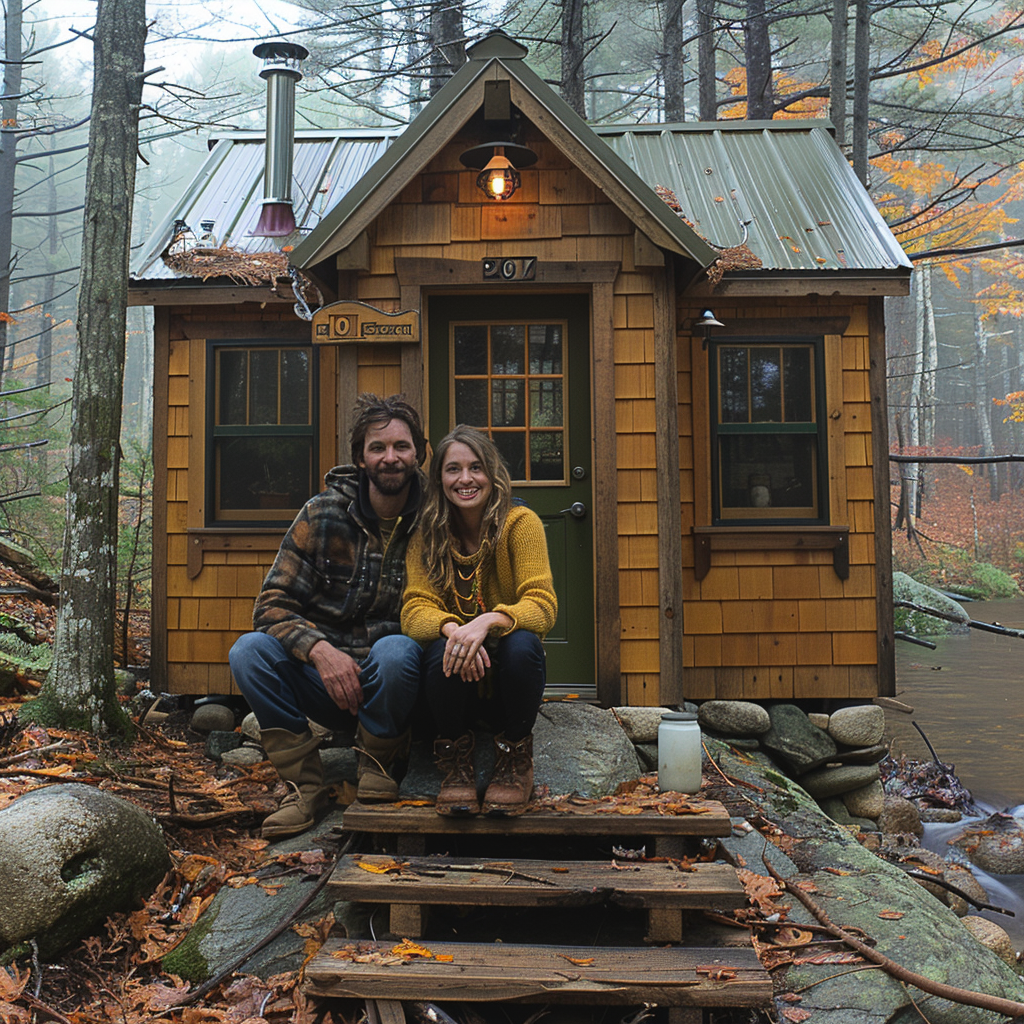
Loads of folks living in tiny houses are great examples that small spaces don’t stop you from having a sustainable, comfy life. Look at Sam and Linda — they moved into a 350-square-foot place in Oregon. They put in a solar septic system, and now they live green, cutting down their carbon footprint big time. And guess what? They still got all the stuff they need.
Then there’s Ben and Rachel from Maine, these two are super smart with their space. They’ve got this composting toilet that saves water and ditches the need for the usual septic system. It’s not just space-saving, it also turns their waste into compost for their plants. It’s like everything goes full circle.
Key Takeaways and Handy Tips
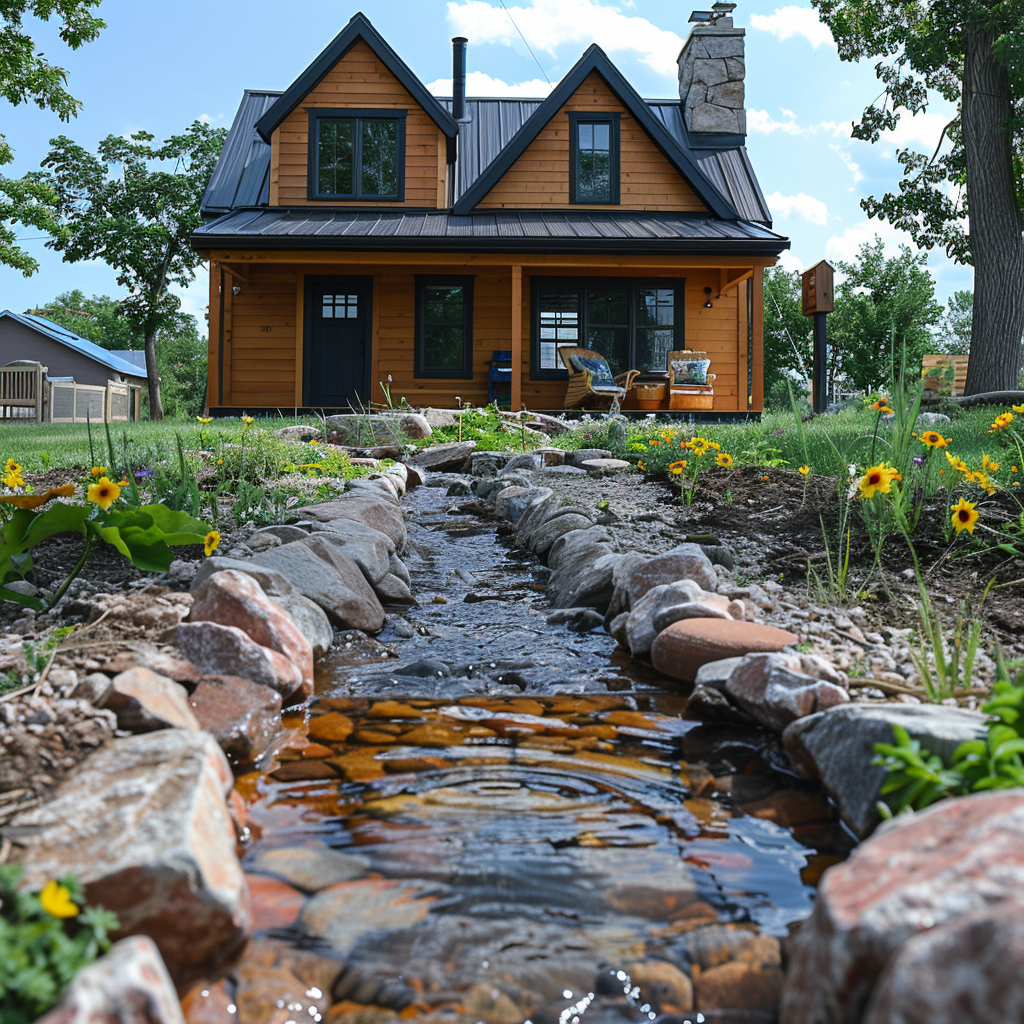
We learn a lot from doing things ourselves, and those who live in small homes have gained some pretty useful knowledge. One big tip is to stay on top of maintenance to avoid problems and make your septic system last longer. Homeowners suggest getting it checked every year and being careful with water use so you don’t put too much strain on the system.
A piece of advice that’s easy to forget is to stick to products that break down easily – this means choosing the right soaps and cleaners. This helps keep the good bacteria in your tank happy and ready to break down waste. Also, watch what you flush—things like oils, coffee grounds, and the wrong kind of toilet paper can cause blockages and mess up how well your septic system works.
Also, people who’ve been there say you should do your homework and talk to experts when you’re setting up your septic system. Tailoring it for your specific location, the kind of soil you have, and how many people are living in your home can be key to a trouble-free system.
Understanding Tiny House Septic System Terms
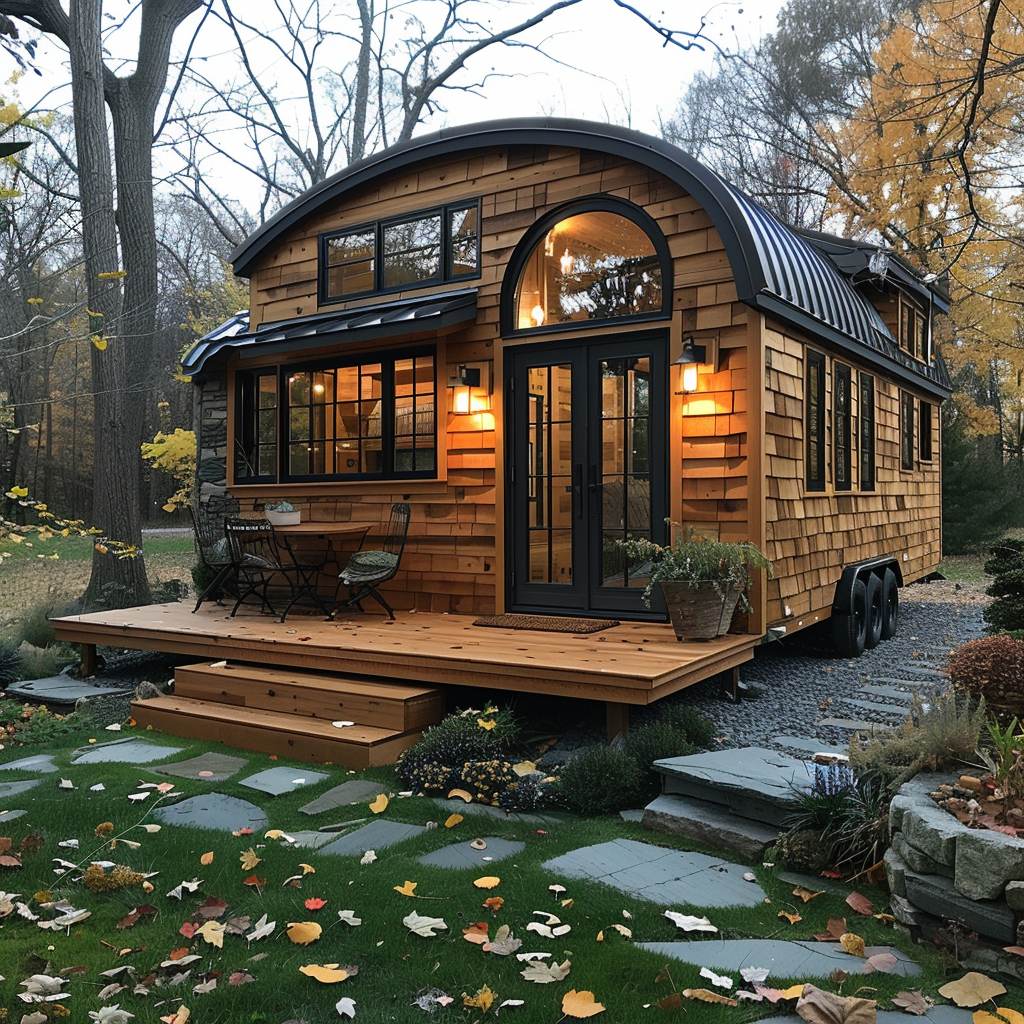
It’s crucial to know the words related to tiny house septic systems to manage and maintain your system properly. Here are some key terms:
- Absorption Field: This space spreads out the liquid from your septic tank into the ground, where it’s naturally filtered.
- Effluent: This is the wastewater that flows out of your septic tank.
- Septic Tank: It’s a tank buried underground that collects and starts to treat household wastewater.
- Leach Field: Just another name for an absorption field. It’s the part of the ground that cleans the effluent.
- Composting Toilet: This toilet breaks down human waste into compost using a natural process called composting.
You can usually find more words like these in the glossary section of your manual, which will help you better get how everything in your system works together.
Rules and Requirements for Septic Systems in Small Homes
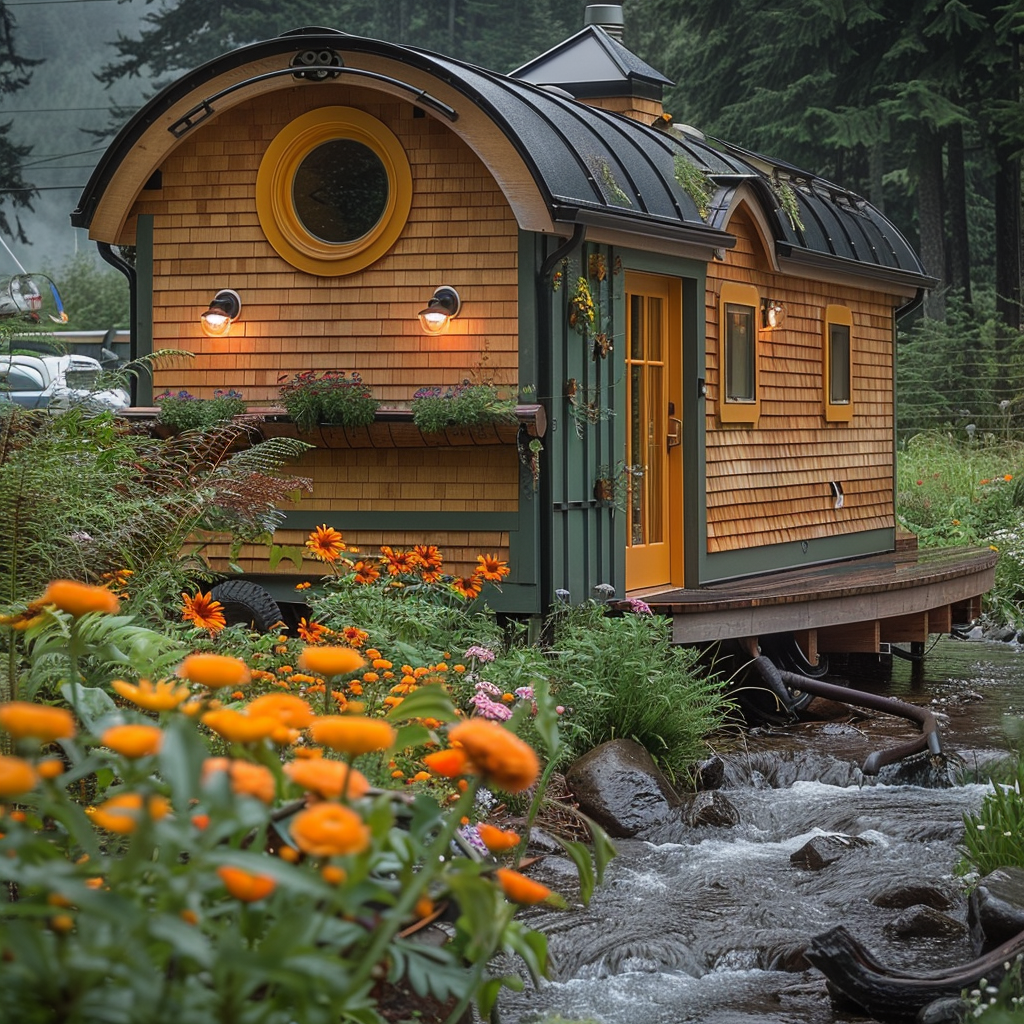
Different organizations control septic systems, including the ones in small homes. These groups work at the community, state, and sometimes national levels. They apply rules meant to protect people and the environment. Where you live defines what building rules you must attend to as well as getting the right permits.
These tell you how to create, place, look after, and check your septic system. The Environmental Protection Agency (EPA) sets out general advice while local health offices have rules that fit the area’s needs. You might also need to meet standards from the National Sanitation Foundation (NSF), making sure your system is up to scratch for health and safety.

I’m Tim Robberts, a seasoned wastewater treatment & septic system expert with over 40 years of experience in the field. My career began as a septic tank installer, and I quickly gained a reputation for my attention to detail and commitment to excellence. Over the years, I’ve honed my skills in designing, installing, and maintaining septic systems for residential and commercial properties.
